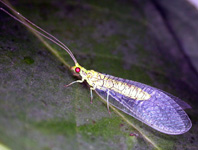Abstract
The third instar of the Australian green lacewing Italochrysa insignis (Walker) is described and compared with that of the European Italochrysa italica (Rossi). Larvae of both species are associated with arboreal ant nests. Moreover, they share a substantial number of morphological adaptations that may defend them against ants and that distinguish them from larvae of other chrysopids. The larvae of the two Italochrysa Principi species also have distinct differences. The potential systematic value of several of the larval characters at the tribal, generic, and species levels is assessed, and a brief review of myrmecophily in the Belonopterygini is presented.

